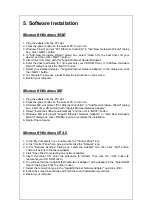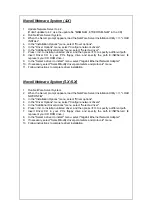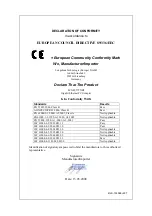
Linux kernel 2.2.x.
1. Compiling rtl8169.c
"gcc -DMODULE -Wall -Wstrict-prototypes -O6 -c rtl8169.c".
2. Move the object code rtl8169.o to the directory
"/lib/modules/2.2.14-5.0/net".
"cp rtl8169.o /lib/modules/2.2.14-5.0/net"
3. Insert module to kernel.
"insmod
rtl8169"
4. Check driver status
"dmesg"
5. The media can be forced to one of the 5 modes as follows.
The link speed and duplex mode can be forced in 5 modes.
Command:"insmod rtl8169 media = SET_MEDIA"
Ex: "insmod rtl8169 media=0x04" will force link mode to be 100Mpbs Half-duplex.
SET_MEDIA can be:
_10_Half = 0x01
_10_Full = 0x02
_100_Half = 0x04
_100_Full = 0x08
_1000_Full = 0x10
Linux kernel 2.4.x.
1. Compiling r8169.c using 'Makefile'.
"make"
<NOTE>Please remember to ASSIGN "NEW_INCLUDE_PATH" in Makefile according to
Linux kernel.
2. Move r8169.o to the directory
"/lib/modules/<kernel>/kernel/drivers/net".
"cp
r8169.o
/lib/modules/<kernel>/kernel/drivers/net"
where <kernel> represents the kernel version, say 2.4.18-3 in Red Hat 7.3
3. Insert module by
"insmod
r8169"
4. Check driver status
"dmesg"
5. The media can be forced to one of the 5 modes as follows.
Cmd: "insmod r8169 media = SET_MEDIA"
For example:
"insmod r8169 media = 0x04" will force PHY to operate in 100Mpbs Half-duplex.
SET_MEDIA can be:
_10_Half= 0x01
_10_Full = 0x02
_100_Half= 0x04
_100_Full= 0x08
_1000_Full= 0x10


























